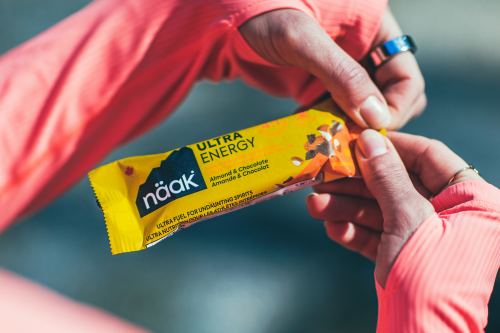Now that our first cricket-protein products have arrived – thanks Näak! – we figure this is as good a time as any to deep dive on cricket protein, cricket flour and why you’re probably going to see them around more often.
Before we do, however, an admission: eating crickets sounds weird. Yep, we get it. But we encourage you to stay open and curious because there’s a high chance these cricket-protein products may just become your fuel of choice (though they won’t, we’re sad to say, help you jump any higher).
Why crickets?
It’s no secret that the world’s population is exploding and food security is becoming more of an issue. And look, while we believe that the running of triathlons and ultras should be a priority in the event of total societal collapse, you’ll have a hard time convincing the rest of the world to direct their precious protein into bars and recovery mixes come the apocalypse
Fortunately, crickets – and insects more broadly – have been hailed by the Food and Agriculture Organisation of the United Nations (FAO) as having huge potential when it comes to food security. And with crickets containing double(ish) the amount of protein as chicken or steak per 100 grams, there’s no reason – aside from Western cultures finding insects a bit icky – why gym junkies from Geelong to Germany can’t chase gains while chowing down on a cricket protein bar.
What is cricket flour?
Relax – you’re not actually eating bits of cricket, so there’ll be no legs or wings sticking out of your protein bar. Though crickets can, of course, be eaten as is, they’re more often consumed as a flour. Basically, the crickets are frozen, cooked, dried and then milled into a fine powder, which can replace other protein powders or flours.
What does cricket flour taste like?
A little nutty. That’s really it. And its neutral flavour is a big reason why cricket flour is becoming more and more popular. Cricket flour can be added to energy bars, protein shakes or baked goods without changing the flavour and, to be perfectly honest, you probably wouldn’t be able to tell if it had been added.
Warning! Crickets and crustaceans are closely related, so those with a shellfish allergy should be cautious with cricket flour. Given the chance that you may have an allergic reaction, you should probably give crickets a miss. Or at least chat to your doctor about it.
(Naak Ultra Energy Bar Almond & Chocolate - featuring a blend of cricket protein)
Are crickets nutritious?
You bet. We touched on it above, but crickets are around 60% protein per bug, which means 100g of cricket will provide 60g of pure protein. Not bad, right? Especially when you consider that chicken or steak generally contains 25–30g of protein per 100 grams.
Cricket flour is considered a complete protein as it contains all nine essential amino acids. One of these amino acids, Leucine, is a BCAA, which is a key when it comes to muscle growth. Crickets are also packed full of vitamins and minerals including Omega-3s, B12, calcium, potassium, iron and magnesium.
Is cricket flour a safe source of protein?
The Western world tends to get hung up on the idea of eating insects, but you can rest assured that there’s nothing dangerous about eating crickets unless, of course, you’re allergic to them; or shellfish, as we mentioned earlier. We’re not saying you should go forth and harvest crickets yourself, but if you’re consuming cricket protein products from reputable brands, you really shouldn’t run into any dramas.
Is cricket flour environmentally friendly?
Did you know that almost half of the world’s habitable land is used for agriculture? And of that land, 80% is reserved for livestock grazing and growing animal feed? Plus, our friends at the FAO say that almost 15% of global emissions come from livestock production. What we’re trying to say is this: crickets look like a pretty good option.
The FAO lists a bunch of other benefits to eating insects (including crickets):
- They require significantly less water than cattle
- They emit relatively few greenhouse gases
- 1g of carbon produced per kg of insect protein vs 2.85kg of carbon for a kg of steak
- They have high feed-conversion efficiency (convert feed mass into body mass)
- Low risk of transmitting zoonotic infections
Read it again: 1g of carbon produced per kg of insect protein vs 2.85kg of carbon for a kg of steak
So, is cricket flour environmentally friendly?
Sure is.
Will you be doing the planet and your palate a favour?
Sure will.
And, more importantly, will consuming crickets make you jump higher?
Come on, don’t be stupid. We spoke about this.


